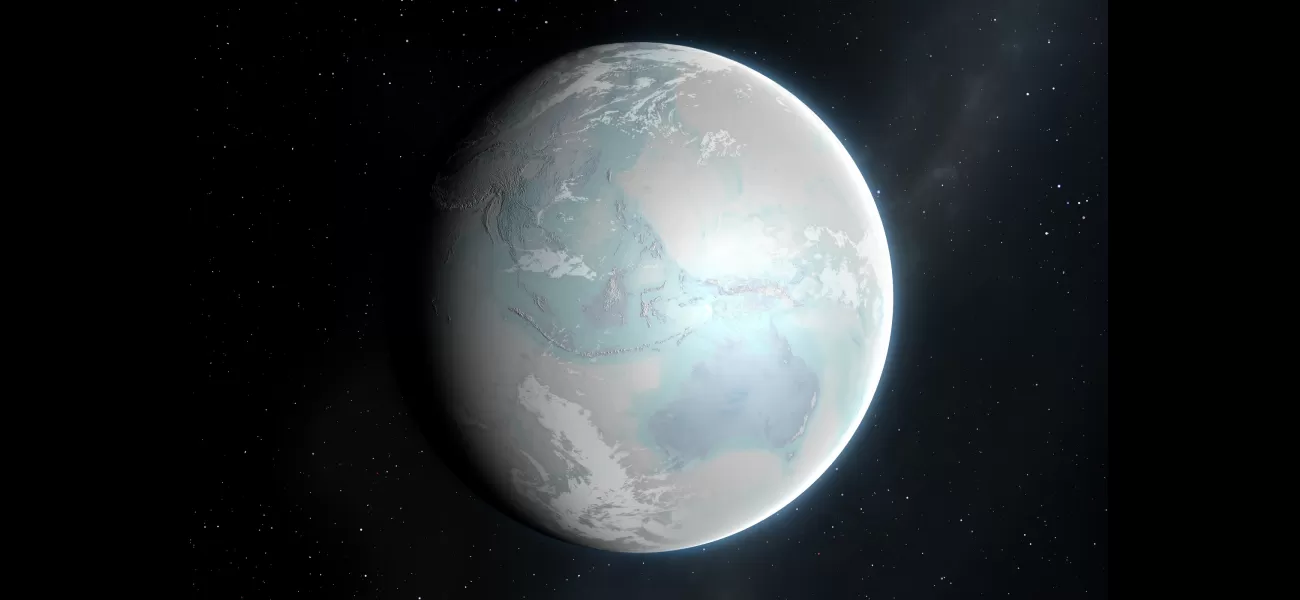Earth used to be completely frozen, but now we know why. The reason might surprise you.
The snowglobe is not enjoyable.
February 9th 2024.

Once upon a time, the Earth was a frozen wonderland. Approximately 700 million years ago, our planet was completely covered in ice, and scientists were baffled as to why. This icy period, also known as the Sturtian glaciation, lasted for 57 million years, long before the age of dinosaurs and complex plant life.
Imagine a world where snow and ice stretched from one pole to the other, with no sign of greenery or warmth. That was the reality of the Sturtian glaciation. However, thanks to the hard work of Australian geologists, we now have a better understanding of what caused this extreme ice age. Surprisingly, it all comes down to carbon dioxide.
Yes, the same carbon dioxide that is currently causing global warming had the opposite effect during the Sturtian glaciation. The team of researchers discovered that a historic decrease in volcanic carbon dioxide emissions played a major role in triggering the ice age and sustaining it for such a long period of time.
Lead author Dr. Adriana Dutkiewicz explains, "We now believe we have solved the mystery. The low levels of volcanic carbon dioxide emissions, combined with the natural weathering of a large amount of volcanic rocks in Canada, led to a decrease in atmospheric carbon dioxide." This decrease resulted in a drop in temperature, plunging the Earth into an icy cold state.
It's important to note that carbon dioxide is a necessary greenhouse gas that helps regulate the Earth's temperature. As sunlight enters the Earth's atmosphere and bounces off its surface, greenhouse gases like CO2 absorb and re-emit the radiation, keeping the planet warm. But when there is less carbon dioxide in the atmosphere, less heat is trapped, leading to a drastic drop in temperature.
Dr. Dutkiewicz adds, "There have been many theories about what caused the ice age and why it lasted for 57 million years. It's truly a remarkable span of time for us humans to comprehend." To uncover the mystery, the team used advanced computer models to study the Earth's evolution during the Cryogenian Period, which lasted from 720 to 635 million years ago.
This period, also known as the Snowball Earth event, saw the entire planet freeze, including the equator. Fossils and rock formations all over the world provide evidence of the Sturtian glaciation. The name itself comes from British explorer Charles Sturt, who named it after a rock formation he discovered in the Sturt River.
The team's research also involved studying the Earth's plate tectonics and the movement of continents and oceans after the breakup of a supercontinent called Rodina. By connecting this data with a computer model that calculated carbon dioxide release from underwater volcanoes, the team was able to uncover the cause of the Sturtian glaciation.
Co-author Professor Dietmar Müller explains, "Geology played a significant role in shaping the Earth's climate during this time. We believe that a combination of plate tectonic reorganization and a massive volcanic province in Canada eroding and absorbing atmospheric CO2 led to the ice age."
Thankfully, the Earth eventually warmed up again, and the ice melted away. However, it serves as a reminder of how sensitive our planet is to changes in carbon dioxide levels. Today, even though volcanic activity is relatively low, human-induced carbon emissions are causing the Earth to heat up at an alarming rate.
The team's groundbreaking study was published in the journal Geology, shedding new light on the Earth's history and the role of carbon dioxide in shaping our planet's climate. As we continue to face the consequences of climate change, it's essential to remember the lessons we can learn from our planet's past.
Imagine a world where snow and ice stretched from one pole to the other, with no sign of greenery or warmth. That was the reality of the Sturtian glaciation. However, thanks to the hard work of Australian geologists, we now have a better understanding of what caused this extreme ice age. Surprisingly, it all comes down to carbon dioxide.
Yes, the same carbon dioxide that is currently causing global warming had the opposite effect during the Sturtian glaciation. The team of researchers discovered that a historic decrease in volcanic carbon dioxide emissions played a major role in triggering the ice age and sustaining it for such a long period of time.
Lead author Dr. Adriana Dutkiewicz explains, "We now believe we have solved the mystery. The low levels of volcanic carbon dioxide emissions, combined with the natural weathering of a large amount of volcanic rocks in Canada, led to a decrease in atmospheric carbon dioxide." This decrease resulted in a drop in temperature, plunging the Earth into an icy cold state.
It's important to note that carbon dioxide is a necessary greenhouse gas that helps regulate the Earth's temperature. As sunlight enters the Earth's atmosphere and bounces off its surface, greenhouse gases like CO2 absorb and re-emit the radiation, keeping the planet warm. But when there is less carbon dioxide in the atmosphere, less heat is trapped, leading to a drastic drop in temperature.
Dr. Dutkiewicz adds, "There have been many theories about what caused the ice age and why it lasted for 57 million years. It's truly a remarkable span of time for us humans to comprehend." To uncover the mystery, the team used advanced computer models to study the Earth's evolution during the Cryogenian Period, which lasted from 720 to 635 million years ago.
This period, also known as the Snowball Earth event, saw the entire planet freeze, including the equator. Fossils and rock formations all over the world provide evidence of the Sturtian glaciation. The name itself comes from British explorer Charles Sturt, who named it after a rock formation he discovered in the Sturt River.
The team's research also involved studying the Earth's plate tectonics and the movement of continents and oceans after the breakup of a supercontinent called Rodina. By connecting this data with a computer model that calculated carbon dioxide release from underwater volcanoes, the team was able to uncover the cause of the Sturtian glaciation.
Co-author Professor Dietmar Müller explains, "Geology played a significant role in shaping the Earth's climate during this time. We believe that a combination of plate tectonic reorganization and a massive volcanic province in Canada eroding and absorbing atmospheric CO2 led to the ice age."
Thankfully, the Earth eventually warmed up again, and the ice melted away. However, it serves as a reminder of how sensitive our planet is to changes in carbon dioxide levels. Today, even though volcanic activity is relatively low, human-induced carbon emissions are causing the Earth to heat up at an alarming rate.
The team's groundbreaking study was published in the journal Geology, shedding new light on the Earth's history and the role of carbon dioxide in shaping our planet's climate. As we continue to face the consequences of climate change, it's essential to remember the lessons we can learn from our planet's past.
[This article has been trending online recently and has been generated with AI. Your feed is customized.]
[Generative AI is experimental.]
0
0
Submit Comment





